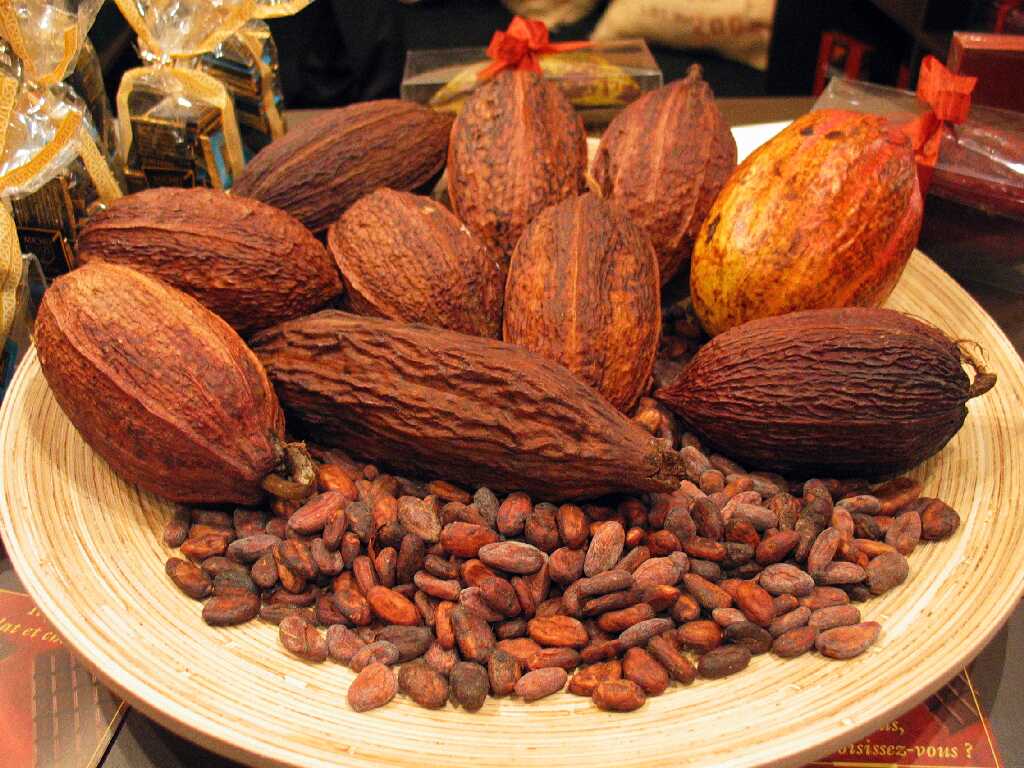
Last week I found some cocoa pods in our local vegetable market and made some fresh homemade hot chocolate, what a treat. I have been told that there is a huge opportunity to grow this crop in Bocas del Toro and it is now becoming feasible to start a small plantation. Like coffee, it takes 4 years from planting to production. Here is another sign of support for that sector
The sustained growth in demand for cocoa will continue next season, with prices exceeding $2,600 per tonne.
An article in Emol.com reports that “cocoa mills will increase production coming to a peak in the next two years, in order to meet the record demand for chocolate, in a time when the dip in supply from West Africa has resulted in the first seed shortages to have occurred in three seasons. Processing will see a jump in orders going up 4.9% compared to the season that began Oct. 1, according to Bethlehem, a risk consultancy staple goods located in Pennsylvania, who for 17 years has kept track of the market. ”
“Chocolate sales will climb by 5.7% to reach U.S. $108,000 million, as calculated by the London-based Euromonitor International Ltd. Prices will rise by 7.8% and will be located at around $2,643 per metric ton during the first half of 2013 in London, according to the average estimates of 17 analysts sought out by Bloomberg. ”
Source: Emol.com
Here is where chocolate and cocoa butter comes from:
You might be wondering where cocoa butter comes from? What plant can produce cocoa butter? Well, cocoa seeds are harvested from cocoa trees and meticulously processed to acquire the cocoa butter. The cocoa tree that produces cocoa beans has been cultivated since the days of the Mayan Civilization in Central America. It has been popular since cocoa seeds can either be turned into chocolates, medicines, drinks, cocoa butter, and as ingredients in cosmetics.
A Swedish Botanist gave the cocoa tree its Greek name, Theobroma Cacao and the botanical name is,”foods of the gods”. Cocoa trees usually grew in tropical Countries. It grows up to 25 feet high with dark green leaves and needs to be shaded from direct sunlight. If these trees are planted in a well shaded environment it would have a good harvest. So the farmers would plant cocoa trees beside fast growing tall trees like coconuts and bananas to have a permanent shade.
A cocoa tree bears fruit after four years. Before the rainy season it bears flowers in abundance with colors of pink and white. These flowers would eventually develop into fruits called the cacao pod but only a few flowers would develop into becoming a fruit. The time frame from flower buds in becoming a fruit takes five months. The tree itself is quite unique from other fruit bearing trees in the tropical regions because cacao pods can be seen growing forth from the trunks and branches. The farmers had to prune and cut off some of the branches and leaves to make a good harvest of cacao beans. The color of unripe fruit is color green and as it ripens it turns to yellow-red or golden-orange colored. The weight of cacao pod can be 500 grams and with lengths up to 20 centimeters. Inside the cocoa pod are 20 to 40 beans and each bean measures 2 centimeters. It offers two harvests each year. Countries that had vast plantations of cacao trees are Philippines, Indonesia, Malaysia, Brazil, Ghana, Central America, and South America.
There are three types of cocoa beans and within these types has different varieties. The names include Criollo, Forastero, and Trinitario which are the hybrid of Criollo and Friostoro.
- Forastero has been grown in vast plantations in the Countries of Brazil and West Africa. These Countries supplied other Nations that don’t produce cocoa beans adding incomes and jobs to their homeland. The characteristics of Forastero are hard and vigorous while it contains the strongest flavor among other varieties.
- Criollo is another cocoa seeds with mild and weak flavor. The Criollo cocoa pods are not hard like the Forastero but it’s much softer. The cocoa seeds could reach to 20 to 30 pale or ivory colored beans or seeds. The Countries that has many plantations includes Indonesia, Central America, and South America.
- Trinitario is the hybrid of Forastero and Criollo. It contains 30 beans inside that cocoa pods and seeds have another color unlike the common white ivory in other types of cocoa plant. The plantations can be found in Countries like Papua New Guinea, Caribbean, and Cameroon.
In 1998 research studies suggest that cocoa had contributed various therapeutic usage needed for the survival of humanity. The end product of cocoa plant which is cocoa butter has proved that it’s an excellent good source for cosmetics products throughout the World.